Md. Tarek Habib
A Machine Learning Approach for Driver Identification Based on CAN-BUS Sensor Data
Jul 16, 2022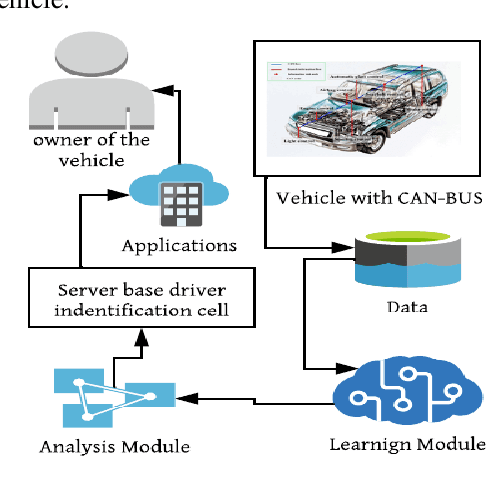
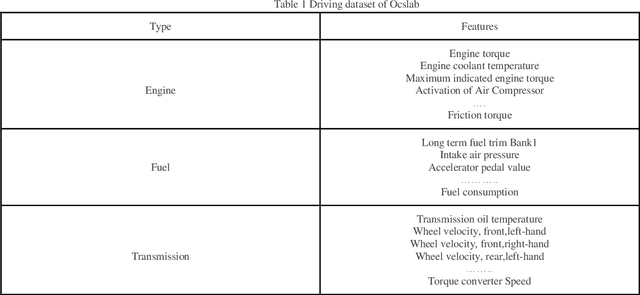
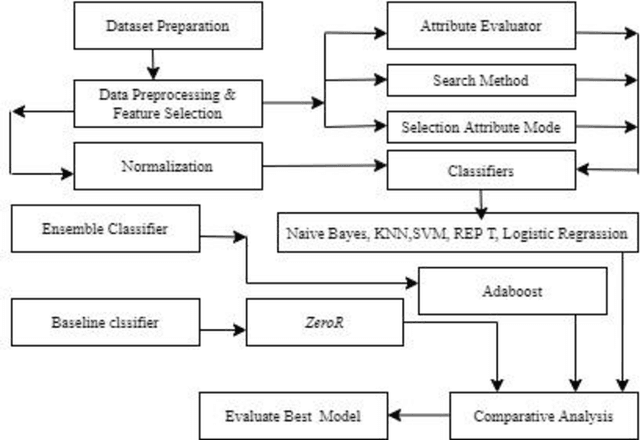
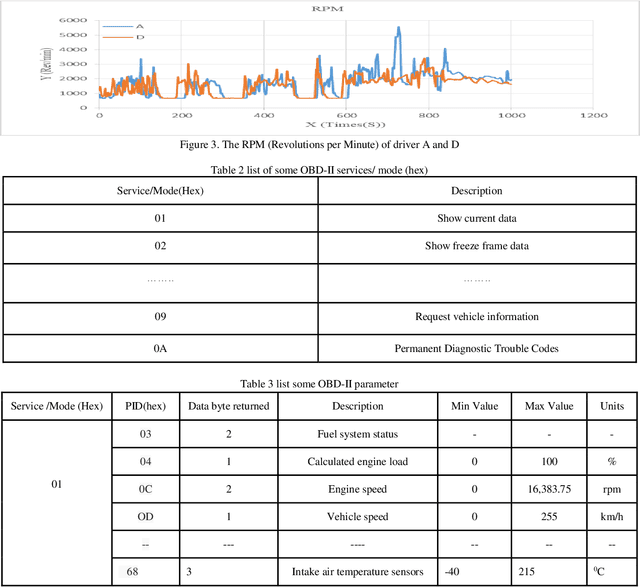
Abstract:Driver identification is a momentous field of modern decorated vehicles in the controller area network (CAN-BUS) perspective. Many conventional systems are used to identify the driver. One step ahead, most of the researchers use sensor data of CAN-BUS but there are some difficulties because of the variation of the protocol of different models of vehicle. Our aim is to identify the driver through supervised learning algorithms based on driving behavior analysis. To determine the driver, a driver verification technique is proposed that evaluate driving pattern using the measurement of CAN sensor data. In this paper on-board diagnostic (OBD-II) is used to capture the data from the CAN-BUS sensor and the sensors are listed under SAE J1979 statement. According to the service of OBD-II, drive identification is possible. However, we have gained two types of accuracy on a complete data set with 10 drivers and a partial data set with two drivers. The accuracy is good with less number of drivers compared to the higher number of drivers. We have achieved statistically significant results in terms of accuracy in contrast to the baseline algorithm
Convolutional Neural Network Based Partial Face Detection
Jun 29, 2022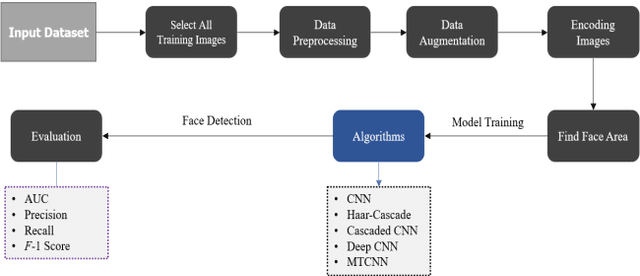

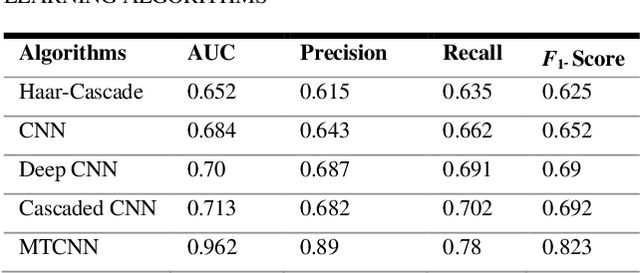

Abstract:Due to the massive explanation of artificial intelligence, machine learning technology is being used in various areas of our day-to-day life. In the world, there are a lot of scenarios where a simple crime can be prevented before it may even happen or find the person responsible for it. A face is one distinctive feature that we have and can differentiate easily among many other species. But not just different species, it also plays a significant role in determining someone from the same species as us, humans. Regarding this critical feature, a single problem occurs most often nowadays. When the camera is pointed, it cannot detect a person's face, and it becomes a poor image. On the other hand, where there was a robbery and a security camera installed, the robber's identity is almost indistinguishable due to the low-quality camera. But just making an excellent algorithm to work and detecting a face reduces the cost of hardware, and it doesn't cost that much to focus on that area. Facial recognition, widget control, and such can be done by detecting the face correctly. This study aims to create and enhance a machine learning model that correctly recognizes faces. Total 627 Data have been collected from different Bangladeshi people's faces on four angels. In this work, CNN, Harr Cascade, Cascaded CNN, Deep CNN & MTCNN are these five machine learning approaches implemented to get the best accuracy of our dataset. After creating and running the model, Multi-Task Convolutional Neural Network (MTCNN) achieved 96.2% best model accuracy with training data rather than other machine learning models.
Automated Word Prediction in Bangla Language Using Stochastic Language Models
Feb 25, 2016



Abstract:Word completion and word prediction are two important phenomena in typing that benefit users who type using keyboard or other similar devices. They can have profound impact on the typing of disable people. Our work is based on word prediction on Bangla sentence by using stochastic, i.e. N-gram language model such as unigram, bigram, trigram, deleted Interpolation and backoff models for auto completing a sentence by predicting a correct word in a sentence which saves time and keystrokes of typing and also reduces misspelling. We use large data corpus of Bangla language of different word types to predict correct word with the accuracy as much as possible. We have found promising results. We hope that our work will impact on the baseline for automated Bangla typing.
Automated Fabric Defect Inspection: A Survey of Classifiers
Feb 14, 2014



Abstract:Quality control at each stage of production in textile industry has become a key factor to retaining the existence in the highly competitive global market. Problems of manual fabric defect inspection are lack of accuracy and high time consumption, where early and accurate fabric defect detection is a significant phase of quality control. Computer vision based, i.e. automated fabric defect inspection systems are thought by many researchers of different countries to be very useful to resolve these problems. There are two major challenges to be resolved to attain a successful automated fabric defect inspection system. They are defect detection and defect classification. In this work, we discuss different techniques used for automated fabric defect classification, then show a survey of classifiers used in automated fabric defect inspection systems, and finally, compare these classifiers by using performance metrics. This work is expected to be very useful for the researchers in the area of automated fabric defect inspection to understand and evaluate the many potential options in this field.
Feasibility of Genetic Algorithm for Textile Defect Classification Using Neural Network
Aug 11, 2012



Abstract:The global market for textile industry is highly competitive nowadays. Quality control in production process in textile industry has been a key factor for retaining existence in such competitive market. Automated textile inspection systems are very useful in this respect, because manual inspection is time consuming and not accurate enough. Hence, automated textile inspection systems have been drawing plenty of attention of the researchers of different countries in order to replace manual inspection. Defect detection and defect classification are the two major problems that are posed by the research of automated textile inspection systems. In this paper, we perform an extensive investigation on the applicability of genetic algorithm (GA) in the context of textile defect classification using neural network (NN). We observe the effect of tuning different network parameters and explain the reasons. We empirically find a suitable NN model in the context of textile defect classification. We compare the performance of this model with that of the classification models implemented by others.
 Add to Chrome
Add to Chrome Add to Firefox
Add to Firefox Add to Edge
Add to Edge